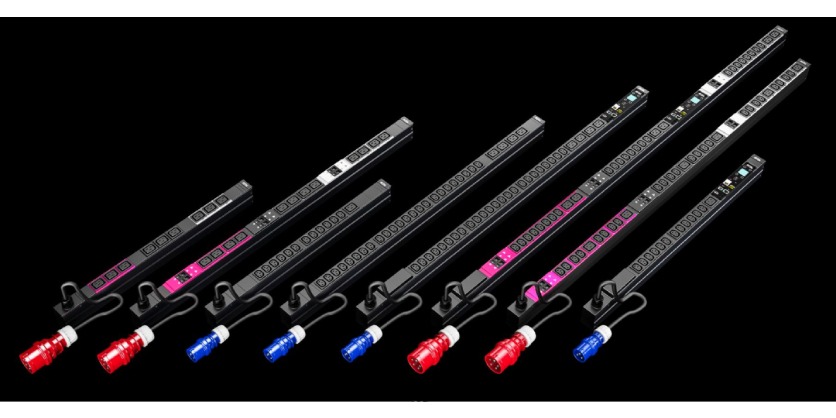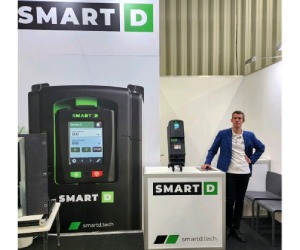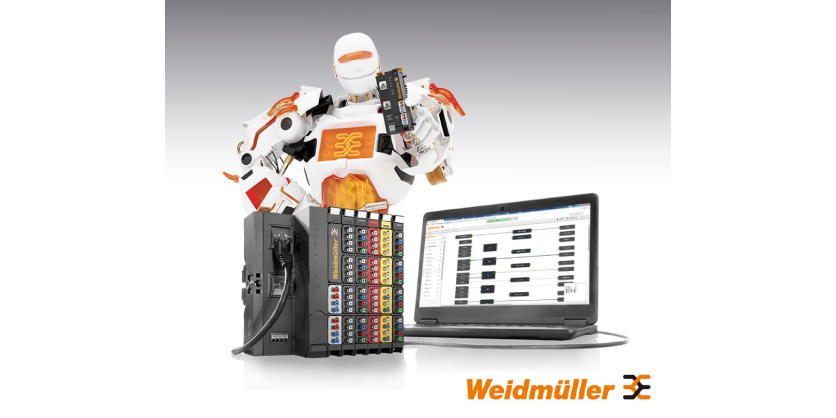How to Choose the Right Power Distribution Unit for Your Data Centre IT Enclosure
February 11, 2025

In today’s data centres, Power Distribution Units (PDUs) have evolved far beyond their origins as basic power strips. As IT infrastructure becomes more complex and power demands within racks vary, choosing the right PDU is critical to optimizing data centre performance, ensuring uptime, and managing power consumption efficiently.
From basic power distribution to advanced intelligent monitoring, modern PDUs are designed to meet the diverse needs of data centres. Here, Rittal breaks down the types of PDUs, their features, and how to select the right one for your data centre IT enclosure.
Types of Server Room Power Distribution Units
Understanding the types of PDUs available is the first step in selecting the right one for your data centre. Here’s an overview of the most common options:
- Basic PDUs: These offer simple power distribution with a fixed number of receptacles (NEMA or IEC) and limited functionality. They are ideal for facilities where advanced monitoring or remote control isn’t required.
- Metered PDUs: These feature a real-time current/load meter for local monitoring, allowing IT managers to take action before an overload occurs. This helps avoid downtime and protects critical equipment.
- Monitored PDUs: Monitored PDUs allow for both local and remote monitoring, enabling precise management of power consumption at the branch or device level. Alerts can be sent via email or SMS for proactive troubleshooting.
- Switched PDUs: These offer advanced functionality, including remote control of individual outlets. Switched PDUs can also automatically shed non-critical loads during outages, preserving power for mission-critical systems.
The choice between these options depends on your facility’s size, staffing, and power management needs.
Modular and Network-Capable PDU Systems
For facilities that require flexibility and scalability, modular and network-capable PDUs provide robust solutions:
- Modular PDUs: These systems use a support channel (backplane) connected directly to the power infeed or UPS system. Socket modules can be added or replaced as needed, allowing easy adaptation to changing power demands.
- Network-Capable PDUs: These allow for combining intelligent and passive modules on a single backplane. Active modules offer switchable outlets, remote control, and monitoring capabilities, making them ideal for hybrid setups where some devices need close monitoring.
Both modular and network-capable systems maximize flexibility and scalability while reducing overall energy consumption. Rittal’s modular PDU systems, for example, feature a backplane design that provides full shock-hazard protection and accommodates two independent infeed sources for redundancy, reducing enclosure costs.
How to Choose the Right PDU for Your Data Centre
When selecting the right PDU, consider the following factors:
1. Facility Size
- Large Facilities: For large data centres with hundreds of racks, cost and space optimization are critical. Basic or metered PDUs can be a cost-effective option, while switched PDUs offer remote reboot capabilities to minimize downtime.
- Small Facilities or Branch Locations: For sites without local IT staff, monitored or switched PDUs are ideal. These provide remote control and monitoring capabilities, saving time and money on site visits.
2. Installation Space
PDUs often require sufficient space in the rear section of the cabinet. Most configurations involve two PDUs fed from separate power supplies. Ensure there is enough room to accommodate the PDUs, cables, and plugs, especially in deeper cabinets (>34 inches).
3. Power Management Needs
- Consider the need for real-time monitoring and control. Switched PDUs are excellent for dynamic environments requiring remote power cycling.
- Modular systems are ideal for facilities expecting frequent changes or expansions, as they allow for easy reconfiguration without specialized training.
By aligning your PDU choice with your facility’s needs, you can optimize power distribution, prevent overloads, and ensure continuous uptime.
Conclusion: Optimizing Power Distribution in Your Data Centre
Every data centre, regardless of size, relies on effective power distribution to maximize uptime and operational efficiency. The right PDU does more than deliver AC power; it provides the tools to monitor, manage, and optimize power usage across your facility.
Rittal’s innovative PDU solutions combine flexibility, scalability, and intelligent monitoring to meet the needs of modern data centres. Whether you’re managing a large enterprise facility or a remote branch location, Rittal’s modular and network-capable PDUs ensure efficient, reliable power distribution for your IT enclosures.
Ready to learn more about Rittal’s power solutions? Explore our High-Performance Cooling Whitepaper for additional insights into optimizing your data centre environment.
More Information
Related Story
Why Smaller May Be Better: Unlocking the Benefits of Compact Enclosures
As industries embrace evolving technologies and the need for efficient space utilization, compact enclosures are taking centre stage. These smaller, space-saving units prove that when it comes to industrial automation, bigger isn’t always better. Combining adaptability, efficiency, and robust protection, compact enclosures are redefining modern production setups.
In this article, Rittal explores why smaller compact enclosures are a smart choice for businesses across industries, diving into their benefits in space efficiency, versatility, cost-effectiveness, and more.





